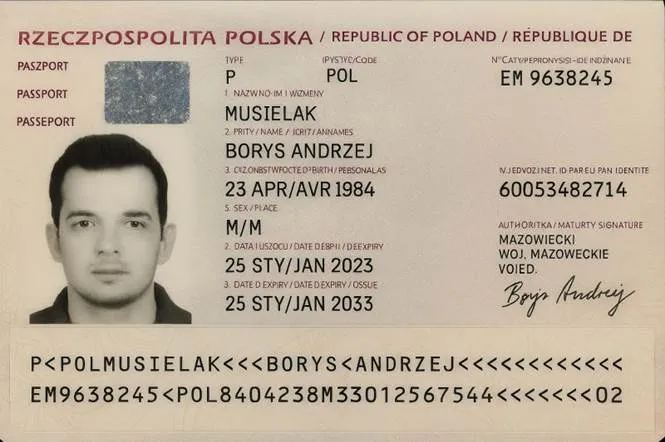Fake Passport Generated by ChatGPT Bypasses Security
AI-Generated Passport Bypasses Digital KYC Check
A recent experiment has reignited concerns in the cybersecurity space: a fake passport, generated entirely using ChatGPT-4o, successfully passed a digital identity verification check. The incident, shared by Polish tech entrepreneur and venture capitalist Borys Musielak on LinkedIn, triggered a wave of alarm across the cybersecurity and fintech communities.

Inside the Experiment: How the Fake Passport Was Made
Musielak revealed that it took him only a few minutes to create a fake passport. Using OpenAI’s GPT-4o, he asked the model to generate a complete passport document with personal details, government insignia, and a realistic photo layout. The final result closely resembled a real travel document and was convincing enough to pass a basic Know Your Customer (KYC) check used by several fintech platforms.
Why This Is Alarming: KYC and Generative AI
The KYC process is designed to verify a user's identity, typically using photo ID documents and user-submitted selfies. Many platforms, including neobanks, crypto exchanges, and lending apps, rely on automated verification tools that scan for tampering, visual artifacts, and inconsistencies. In the past, AI-generated IDs often failed these checks due to issues like poor formatting, low resolution, or unrealistic typography.
This time was different.
Musielak's forged document was nearly flawless, fooling automated verification systems and making it clear: generative AI is closing the realism gap at an unprecedented pace.
Implications: How Real is the Threat?
While the forged passport lacked a physical chip (present in modern biometric passports), it was enough to get through the first layer of ID verification — particularly on platforms that don’t mandate NFC checks or physical presence.
Experts warn that platforms relying solely on photo uploads are now highly susceptible to fraud attempts powered by AI.
Musielak warned that as these tools become more accessible, mass-scale identity fraud could become trivial. Criminals could automate the creation of fake identities for:
- Opening fraudulent bank accounts
- Performing synthetic ID attacks
- Acquiring credit or crypto assets under false identities
Industry Response: A Call for Stronger Verification
In the wake of the experiment, cybersecurity professionals and compliance experts urged companies to upgrade their verification pipelines. Recommended steps include:
- Enforcing NFC-based document verification, which authenticates the embedded chip inside passports
- Leveraging eID infrastructure for countries that support secure digital identities
- Integrating biometric liveness detection to prevent deepfake-based selfie verification
The Model Shut Itself Down... Eventually
Ironically, within just 16 hours of the post going viral, ChatGPT began rejecting prompts related to passport generation. This suggests OpenAI’s moderation systems caught up, but only after the exploit had been demonstrated and circulated online.
This delay highlights the broader challenge: AI safety protocols are reactive, not proactive.
Final Thoughts: A Wake-Up Call
This incident underscores a harsh reality: generative AI, if left unchecked, can outpace traditional fraud prevention tools faster than regulations or safety patches can respond. It also reinforces the need for continuous monitoring, human-in-the-loop systems, and industry-wide collaboration to ensure identity verification methods evolve alongside AI capabilities.
As generative tools grow in capability and adoption, security must not be treated as an afterthought — it must become core infrastructure.
Hope you liked this post. Stay tuned for more tech content and tutorials. Hit me up on my socials and let me know what you think, I'm always up for a good tech convo.
Never Miss a Blog
It's free! Get notified instantly whenever a new post drops. Stay updated, stay ahead.
Related Posts
Creating a Simple ChatGPT Wrapper Web Application
Learn how to build a simple web application that wraps around OpenAI's ChatGPT API using Flask, HTML, CSS, and JavaScript. Step-by-step guide for integrating ChatGPT into your own custom frontend.
15 Jul 2024
Comprehensive Guide to API Security and Database Protection with JavaScript
Discover API security and database protection with JavaScript in this beginner-friendly guide. Explore practical code examples using JWT, Role-Based Access Control, Row-Level Security, and more to safeguard your applications from threats.
26 Mar 2025
Prompt Injection is the SQL Injection of Modern AI Systems
Why prompt injection keeps appearing across agentic browsers, chatbots, and crawlers, and why it feels like a familiar security mistake.
12 Dec 2025